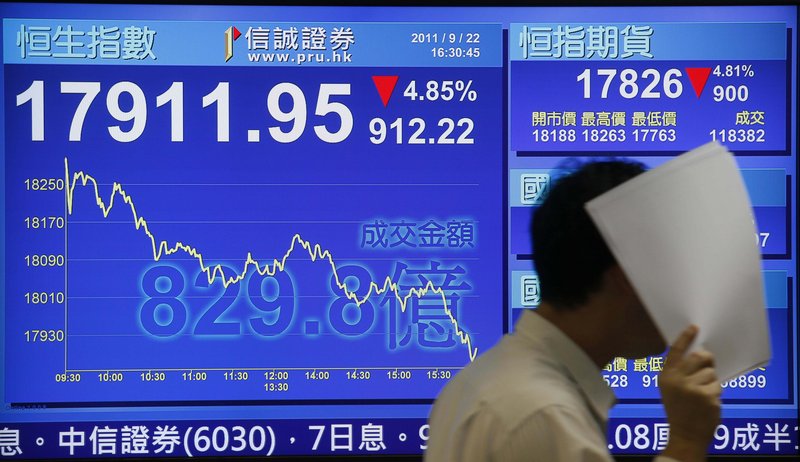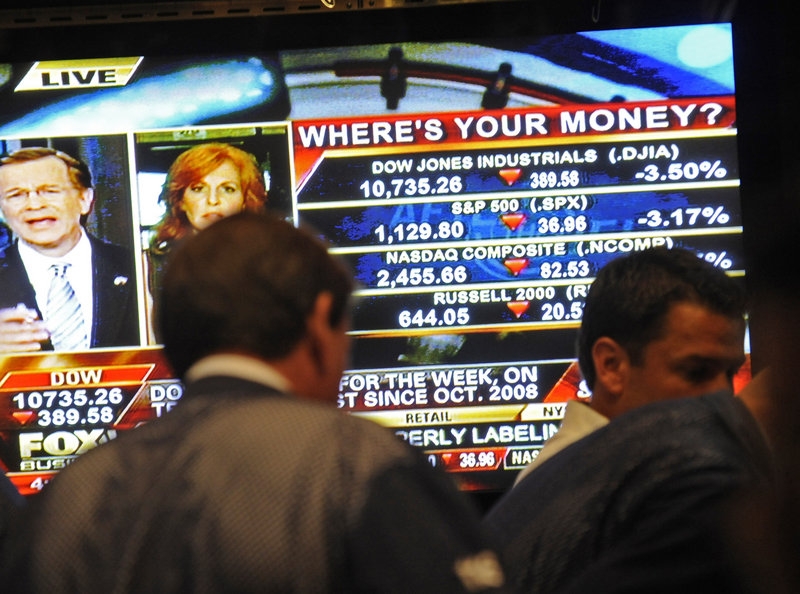NEW YORK – Investors on Wall Street and around the world sold stocks with abandon Thursday, more convinced than ever that a global recession is under way. The Dow Jones industrial average lost almost 400 points.
The sell-off began in Asia, intensified in Europe and rattled markets in the United States all day. Stocks in New York staged a small rally before the end of trading but still finished near their lows for the year.
One financial indicator after another showed that investors are quickly losing hope that the economy can keep growing. The price of oil and metals, both of which depend on economic demand, fell sharply. Traders bought bonds for safety.
FedEx, a company that ships so many goods it is considered a barometer of the U.S. economy, had to lower its earnings forecast for the year because its customers are putting off purchases of electronics and other gadgets from China.
The Dow fell 391.01 points, or 3.5 percent, and closed at 10,733.83. The selling was not just steep but broad: Nineteen stocks on the New York Stock Exchange fell for every one that rose. At one point, the Dow was down more than 500 points.
“Markets rely on confidence and certainty. Right now there is neither,” said John Canally, an economic strategist at LPL Financial, a Boston investment firm.
It was the second consecutive rout in the stock market since the Federal Reserve announced a change in strategy for fighting the economic slowdown — a bid to lower long-term interest rates and get people and companies to spend.
Economic news was bad around the world. A closely watched survey in Europe indicated a recession could be on the way there, and a manufacturing survey suggested a slowdown in China, which has been a hot economy.
“The probability of going back into recession is higher now than at any point in the recovery,” said Tim Quinlan, an economist at Wells Fargo. He put his odds of a recession at 35 percent, the highest yet.
Christine Lagarde, the head of the International Monetary Fund, said the world economy was “entering a dangerous phase.” She told an annual meeting of the IMF and World Bank that nations need credible plans to get their debt under control.
Thursday’s decline isn’t even close to the biggest in 2011. The Dow fell 634 points on Aug. 8, 519 points on Aug. 10 and 512 points on Aug. 4.
It would have to fall 485 more points to reach the traditional definition of a bear market — a 20 percent decline from the market’s peak since the financial meltdown in 2008. That peak was in April.
Send questions/comments to the editors.




Success. Please wait for the page to reload. If the page does not reload within 5 seconds, please refresh the page.
Enter your email and password to access comments.
Hi, to comment on stories you must . This profile is in addition to your subscription and website login.
Already have a commenting profile? .
Invalid username/password.
Please check your email to confirm and complete your registration.
Only subscribers are eligible to post comments. Please subscribe or login first for digital access. Here’s why.
Use the form below to reset your password. When you've submitted your account email, we will send an email with a reset code.